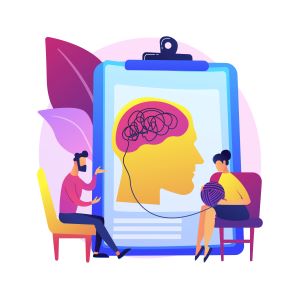Story
Emotions are generated by the thoughts in our brain and felt in the body and that’s why it is the Good News!
This video is the second in this series. The first video is where our emotions come from. So if you haven’t seen that, it’d be a good idea to do so HERE. The next video about the nature of emotions would be helpful and rounds out the videos. Click HERE.
How this works
For this demonstration, I want to use a real world example. In this case, I’m going to have Jack and Jill dating, and Jill is going to break up with Jack the same way three different times. We’re going to make him a happy jack, a neutral jack, and a miserable jack.
Happy Jack
So happy jack.
He becomes aware that Jill says, “Jack, this isn’t working out for me and I’m gonna break up.” Now remember, this is one tenth of a second so we’re really slowing this down. He thinks, “Oh, this is a good thing. We weren’t really getting along. And I wasn’t really happy with her. But, you know, sometimes it takes a while to get to know a person, and I didn’t wanna break her heart, but so this awesome.”
And so he’s says, “Oh, yes, let’s be friends.” And he’s out the door and maybe on his way to send Little Bo Peep a text message.
Neutral Jack
Now neutral jack.
So he becomes aware that Jill says, “Hey, Jack. This isn’t working out for me. And I think it’s best we break it off.”
He’s like, “Whoa. Okay. Well, alright. I know we weren’t hitting it off that great. But, you know, sometimes it takes time to get to know somebody.”
So he might even ask her, “Are you sure?”
She says, “Yeah, Jack. Let’s not waste any more time. We’re definitely not hitting it off.”
In his mind he is thinking, “Okay. That makes sense. You know, I’m gonna be alright. So one way or the other. Whatever.”
Now, I had a young woman one time tell me when I was explaining this that absolutely no way there is never a time when anybody is happy or calm about breaking up. And that’s where she was dead set wrong. That was her beliefs, but in reality, there are many people who, have happy divorce parties or happy breakup parties or are neutral. I’ve had couples come to me and say, Hey, we want to divorce. We’re not getting long, but we want to be good co parents.” And so we work on that. And so by the time that that divorce is final, they’re friends.
Miserable Jack
That’s the more typical when we think of a heartbreak. We’re gonna make this an unhappy jack. We’re making them a sad jack first.
So, Jill says, “Jack, this isn’t working out for me.”
He thinks, “Oh my goodness. She can’t leave me. I’ll be alone, and that would be a horrible and terrible thing. This is just awful. She’ll just ruin my life.”
With thoughts like that, he’s going to sad and depressed and probably a little anxious.
Now, a side note because, when it comes to negative, there are three categories of negative along the lines of sad, along the lines of angry and along the lines of nervous. Learn more about the nature of emotions in the video Emotions Aren’t Bipolar! The 3 ways to Feel Emotions.
If he were to do an angry jack, he might think, “Oh, that no good dagburn rotten so and so. How dare she leave me?” He would feel angry and then act on it. He might curse at her or tell her off or storm away. As my teacher Dr. Pucci would say, “Anger is like wetting your pants. You’re the only one that feels it, but everyone sees it.”
Now your Turn
Now, your turn.
Trying the ABCs on your own. You’ve watched the first video where emotions actually come from. You’ve seen a demonstration. So now it’s your turn to start thinking about your thinking.
So grab a piece of paper and write out the columns A, B and C. And you’re going to do this three times. You’re gonna have a happy time, neutral time and a negative time. Remember A = aware, B = beliefs which are your thoughts and C = Consequences – how you feel emotionally and what you do in response.
And so, just a note because our brain is so very, very quick. It is often hard to know what was going through my mind. One of the questions that I often tell clients is ask yourself, “What am I acting as though I’m thinking?”
Would you like to learn more about trauma and the brain? Click here for a free webinar. Yes, it really is free!
If you would like to know more about how to work with me, Click here.
The form you have selected does not exist.
 Skip to content
Skip to content


